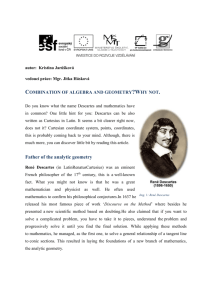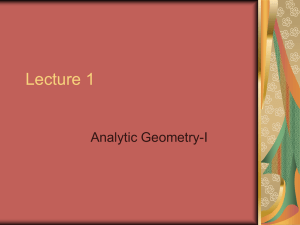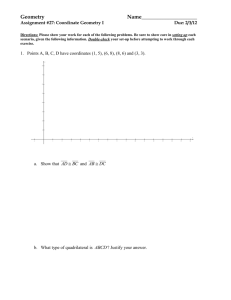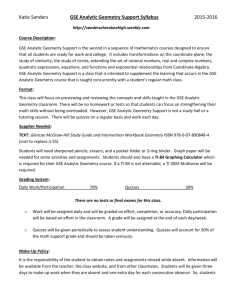Analytic Geometry
advertisement
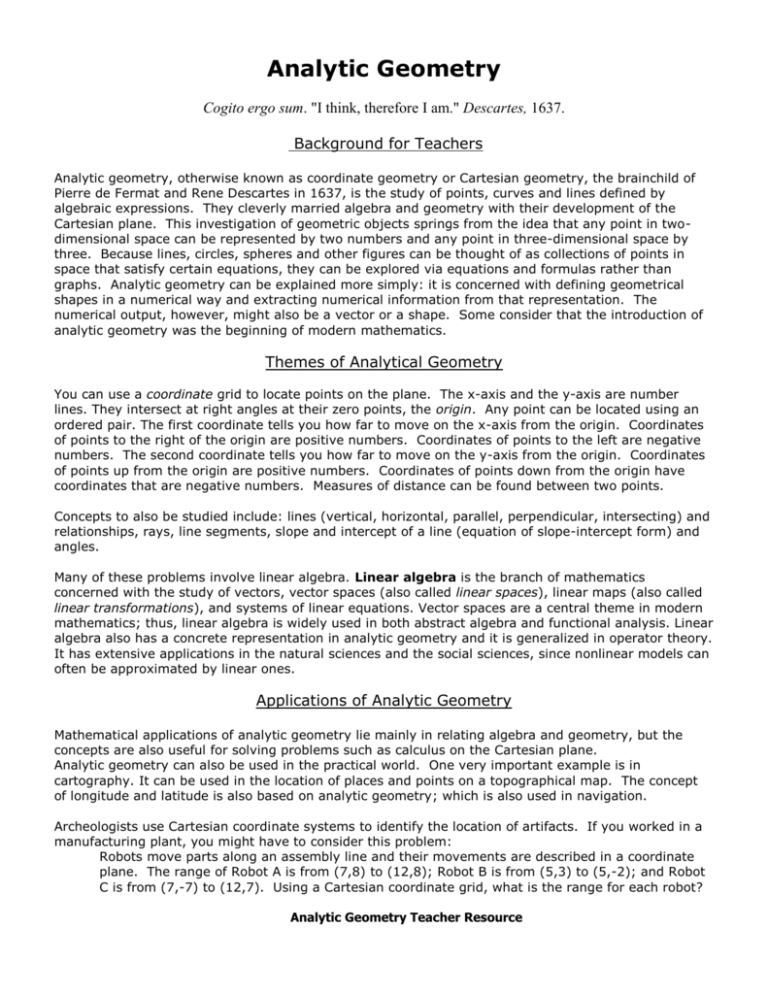
Analytic Geometry Cogito ergo sum. "I think, therefore I am." Descartes, 1637. Background for Teachers Analytic geometry, otherwise known as coordinate geometry or Cartesian geometry, the brainchild of Pierre de Fermat and Rene Descartes in 1637, is the study of points, curves and lines defined by algebraic expressions. They cleverly married algebra and geometry with their development of the Cartesian plane. This investigation of geometric objects springs from the idea that any point in twodimensional space can be represented by two numbers and any point in three-dimensional space by three. Because lines, circles, spheres and other figures can be thought of as collections of points in space that satisfy certain equations, they can be explored via equations and formulas rather than graphs. Analytic geometry can be explained more simply: it is concerned with defining geometrical shapes in a numerical way and extracting numerical information from that representation. The numerical output, however, might also be a vector or a shape. Some consider that the introduction of analytic geometry was the beginning of modern mathematics. Themes of Analytical Geometry You can use a coordinate grid to locate points on the plane. The x-axis and the y-axis are number lines. They intersect at right angles at their zero points, the origin. Any point can be located using an ordered pair. The first coordinate tells you how far to move on the x-axis from the origin. Coordinates of points to the right of the origin are positive numbers. Coordinates of points to the left are negative numbers. The second coordinate tells you how far to move on the y-axis from the origin. Coordinates of points up from the origin are positive numbers. Coordinates of points down from the origin have coordinates that are negative numbers. Measures of distance can be found between two points. Concepts to also be studied include: lines (vertical, horizontal, parallel, perpendicular, intersecting) and relationships, rays, line segments, slope and intercept of a line (equation of slope-intercept form) and angles. Many of these problems involve linear algebra. Linear algebra is the branch of mathematics concerned with the study of vectors, vector spaces (also called linear spaces), linear maps (also called linear transformations), and systems of linear equations. Vector spaces are a central theme in modern mathematics; thus, linear algebra is widely used in both abstract algebra and functional analysis. Linear algebra also has a concrete representation in analytic geometry and it is generalized in operator theory. It has extensive applications in the natural sciences and the social sciences, since nonlinear models can often be approximated by linear ones. Applications of Analytic Geometry Mathematical applications of analytic geometry lie mainly in relating algebra and geometry, but the concepts are also useful for solving problems such as calculus on the Cartesian plane. Analytic geometry can also be used in the practical world. One very important example is in cartography. It can be used in the location of places and points on a topographical map. The concept of longitude and latitude is also based on analytic geometry; which is also used in navigation. Archeologists use Cartesian coordinate systems to identify the location of artifacts. If you worked in a manufacturing plant, you might have to consider this problem: Robots move parts along an assembly line and their movements are described in a coordinate plane. The range of Robot A is from (7,8) to (12,8); Robot B is from (5,3) to (5,-2); and Robot C is from (7,-7) to (12,7). Using a Cartesian coordinate grid, what is the range for each robot? Analytic Geometry Teacher Resource

